Is this silicone bag the answer to sustainable sous vide?
We tested to see if this bag could replace single-use plastic.
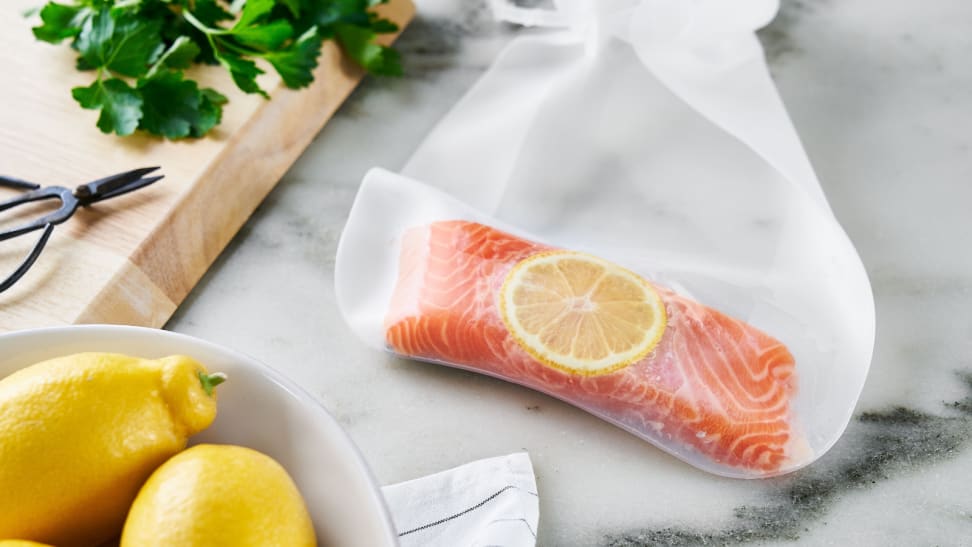 Credit:
Anova Culinary
Credit:
Anova Culinary
Products are chosen independently by our editors. Purchases made through our links may earn us a commission.
There are many benefits of sous vide cooking for experienced chefs and home cooks alike, namely the set-it-and-forget-it nature of this method. However, as a person who tries to be more eco-friendly, my immersion circulator has been collecting dust for some time because using it generates plastic waste from the single-use sous vide bags—but I still crave the perfectly tender cuts of steak and juicy fish produced by this method that cooks food low and slow while submerged in temperature-controlled water.
Thanks to creative sous vide enthusiasts, silicone bags have become a popular replacement for plastic. Anova, a leading kitchen appliance brand that we at Reviewed love, recently released a half-gallon silicone bag to help make sous vide cooking a bit greener.
I cooked fish in the Anova silicone bag—how did it go?
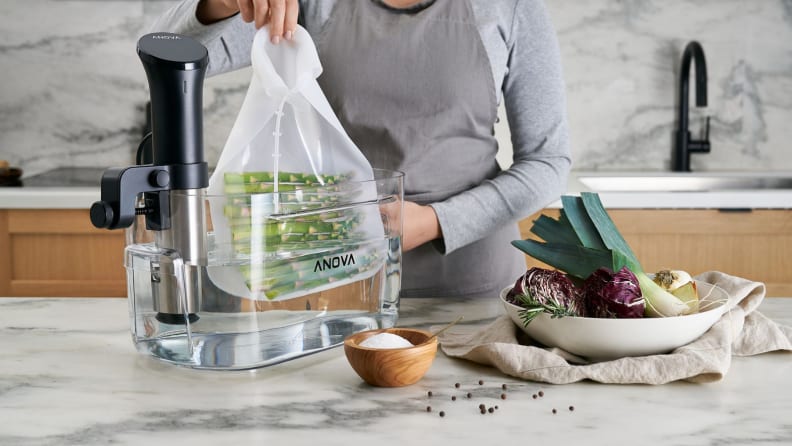
I tried the Anova silicone bag and here's my honest opinion.
To see how Anova’s reusable bag stacked up, I cooked two 7-ounce salmon fillets, one in the standard vacuum-sealed plastic bag and one in the Anova silicone bag, which can't be vacuum-sealed.
The Anova bag is spacious—I had no problem fitting a large piece of salmon in it. Simply add your ingredients, lay the bag as flat as possible to push out the air, and roll it up to further reduce the amount of air in the bag. Secure the bag using the pull tie on the top when it comes time to cook.
I chose the salmon preset in the Anova app to cook both pieces. When the cooking cycle completed, I pierced the fillets with a thermometer and recorded the internal temperature for each.
The fillet cooked in a plastic bag reached 135°F and fillet in the silicone bag was 101°F. As the latter didn’t reach the safe temperature recommended by FDA, I placed it back in the bath and cooked for another 30 minutes.
The silicone-bagged fish was slightly less tender compared to the plastic-bagged version, but it was still more tender than most salmon I’ve cooked in a skillet. Plus, one aspect I like about sous vide cooking is that I can leave the ingredients in the water bath, rather than standing next to a skillet and monitoring the fish.
What I like
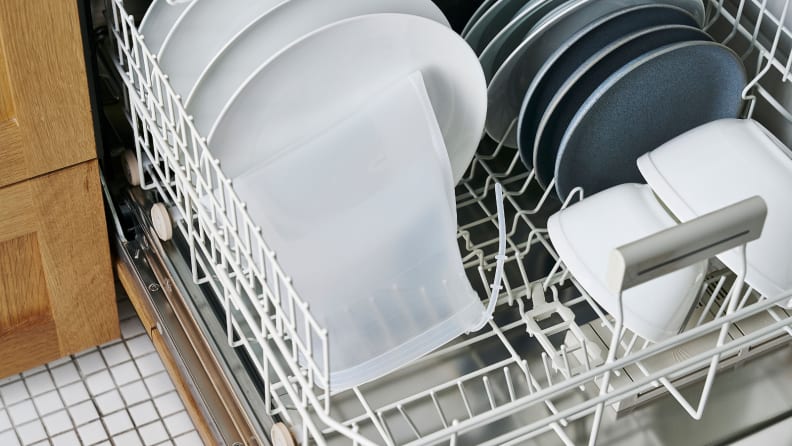
I like how easy it is to clean the bag.
The greatest advantage of using a silicone bag is that it reduces my plastic footprint. Though its lifespan depends on how regularly it’s used (the silicone bags from Anova can allegedly sustain more than 3,000 uses), it’s significantly less wasteful than single-use plastic.
The Anova silicone bag is much larger than any silicone food storage bags that I’ve previously used for sous vide, which means you can seal ingredients in larger quantities in one bag and cook more servings.
They’re dishwasher-safe. I’m not a fan of hand-washing silicone bags, so I’m glad I can simply turn this Anova bag inside out and throw it in the dishwasher.
Lastly, silicone bags are more budget-friendly than plastic in the long run, as they can be reused over and over again. For context, an Anova silicone bag costs $14.99 and gets around 3,000 uses, whereas 3,000 single-use plastic sous vide bags from Anova would cost about $1,500. The Anova bag is made of BPA-free, nontoxic, and food-safe silicone that can withstand chilly freezer temps or hot environments (think: water bath or oven) up to 382°F.
What I don’t like
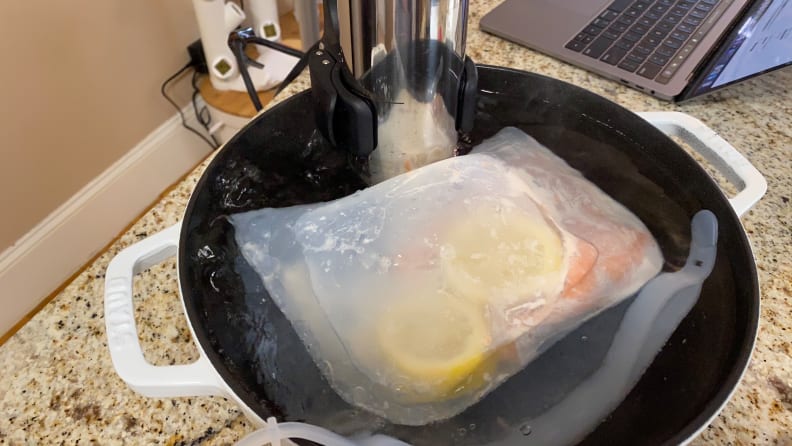
The air caused the bag to float.
I struggled to create a perfectly tight seal with the silicone bag, unlike its plastic vacuum-sealed counterpart. Rolling up the bag helped a bit, but it didn’t entirely eliminate the air. Not to mention the fact that if the ingredients are oddly shaped or especially thick, you’ll likely have trouble squeezing the air out because the gaps between ingredients make it more difficult for the air to escape.
The excess air also caused the silicone bag to float, which led to temperature fluctuations and inconsistency during the cooking process.
To prevent floating, you can use clips, weights, or a sous vide rack to keep bags in place. However, this extra step is less necessary when using plastic bags as the vacuum seal eliminates air completely.
Should you get an Anova reusable silicone bag for sous vide cooking?
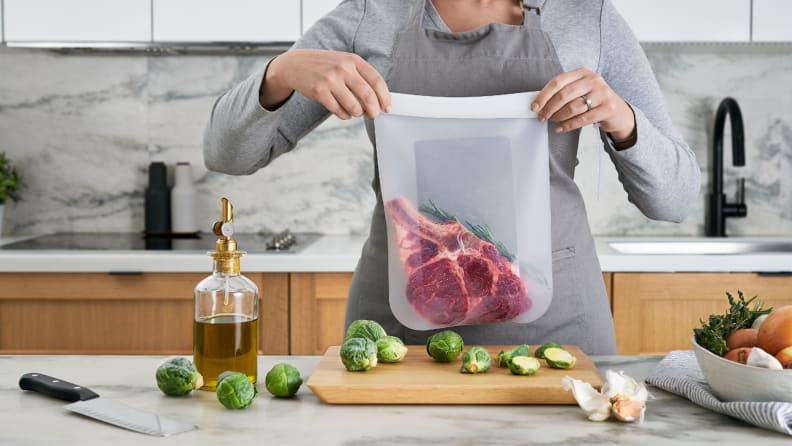
The Anova bag is larger than any other silicone sous vide bags I've seen.
If you love sous vide cooking and being eco-friendly is your top priority, these silicone sous vide bags from Anova could be a good option for you. That said, you'll need to confirm the internal temperatures of foods using a thermometer since timing can be off. While these silicone bags can be finicky at first and can't be vacuum-sealed like the plastic you're used to, the reduced environmental impact and money saving could significantly outweigh the drawbacks for some folks.
Alternatively, steam sous vide is a great option to forego the tedious process of sealing food in any sort of bag. It’s a convenient method to achieve the same precision-driven result as bagged sous vide but takes less effort.


